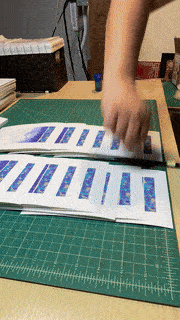
First Print Run: Performance, Lessons, & Learnings!
Success! I launched my first print run, featuring my new line of physical products — greeting cards and mini-prints to start!
Why go from VR/AR art to greeting cards? What the heck, Estella?
I’m still thinking and building immersively! I realize that my creation approach is always weaving in and out of dimensions, physicality, and designing for emotionally meaningful experiences.
Just like how traditional illustration has influenced my 3D work, my virtual work is influencing my physical work now.
I believe the world needs more beauty, more authenticity, and more tangible and FELT connection right now.
I also am using this as a pathway for my physical + XR creations. 👀👀👀 Stay tuned via my newsletter for my future XR-activated physical art pieces!
This is a long blog post with all of my “behind the scenes” thoughts and strategies for my first print run. Read on!
- 2.5D 5
- Animation 5
- Art 88
- Augmented Reality 3
- Botanical Studies 9
- Bryan 7
- Creative Entrepreneurship 3
- Daily Creative Practice 67
- Design School 5
- Designing a Sustainable Life 5
- Health 3
- Horticulture 9
- Plein Air 2
- Process Documentation 2
- Process Visualization 2
- Readings 4
- Resources 6
- Virtual Reality 6
- Writings on Life 51